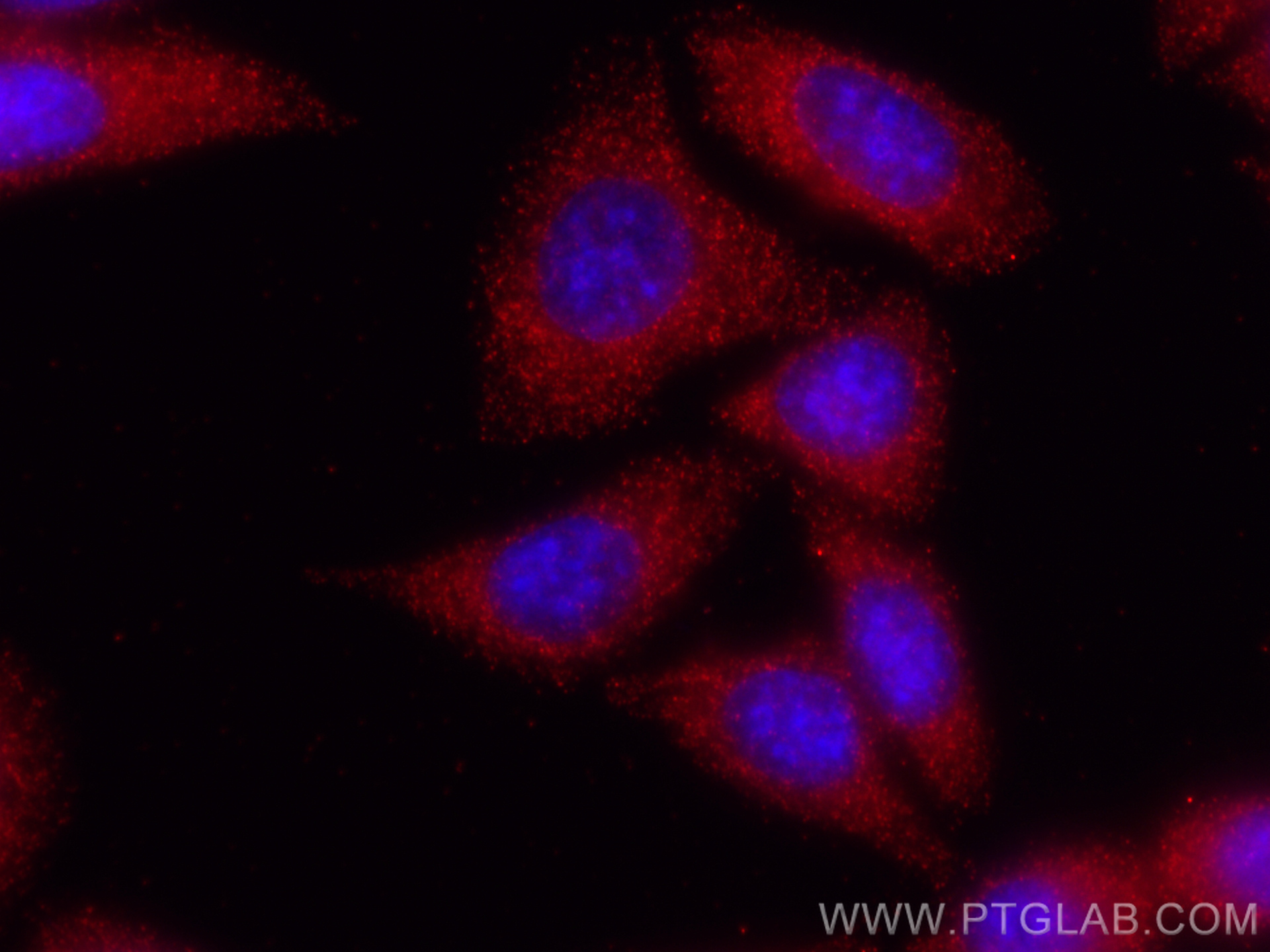验证数据展示
经过测试的应用
| Positive IF/ICC detected in | HepG2 cells |
推荐稀释比
| 应用 | 推荐稀释比 |
|---|---|
| Immunofluorescence (IF)/ICC | IF/ICC : 1:50-1:500 |
| It is recommended that this reagent should be titrated in each testing system to obtain optimal results. | |
| Sample-dependent, Check data in validation data gallery. | |
产品信息
CL594-67916 targets PGD in IF/ICC applications and shows reactivity with Human samples.
| 经测试应用 | IF/ICC Application Description |
| 经测试反应性 | Human |
| 免疫原 | PGD fusion protein Ag6871 种属同源性预测 |
| 宿主/亚型 | Mouse / IgG1 |
| 抗体类别 | Monoclonal |
| 产品类型 | Antibody |
| 全称 | phosphogluconate dehydrogenase |
| 别名 | 6PGD, PGD, PGDH, phosphogluconate dehydrogenase |
| 计算分子量 | 53 kDa |
| 观测分子量 | 53 kDa, 45 kDa |
| GenBank蛋白编号 | BC000368 |
| 基因名称 | PGD |
| Gene ID (NCBI) | 5226 |
| RRID | AB_2923933 |
| 偶联类型 | CoraLite®594 Fluorescent Dye |
| 最大激发/发射波长 | 588 nm / 604 nm |
| 形式 | Liquid |
| 纯化方式 | Protein G purification |
| UNIPROT ID | P52209 |
| 储存缓冲液 | PBS with 50% glycerol, 0.05% Proclin300, 0.5% BSA , pH 7.3 |
| 储存条件 | Store at -20°C. Avoid exposure to light. Stable for one year after shipment. Aliquoting is unnecessary for -20oC storage. |
背景介绍
PGD, also named as PGDH, belongs to the 6-phosphogluconate dehydrogenase family. PGD catalyses the oxidative decarboxylation of 6-phosphogluconate to ribulose 5-phosphate in the context of the oxidative part of the pentose phosphate pathway. PGD is important for the production of NADPH, which is necessary for reductive biosynthesis, such as the formation of lipids and nucleotides, and the activity of enzymes involved in maintaining cell integrity, in combatting oxidative stress and in the first line of immunological defence. (PMID: 35234135)
实验方案
| Product Specific Protocols | |
|---|---|
| IF protocol for CL594 PGD antibody CL594-67916 | Download protocol |
| Standard Protocols | |
|---|---|
| Click here to view our Standard Protocols |
